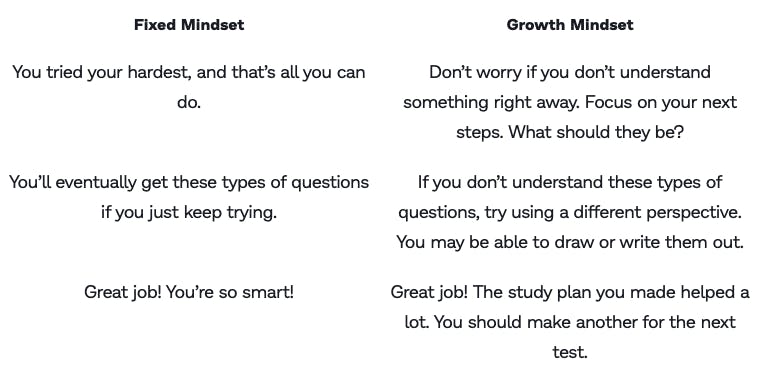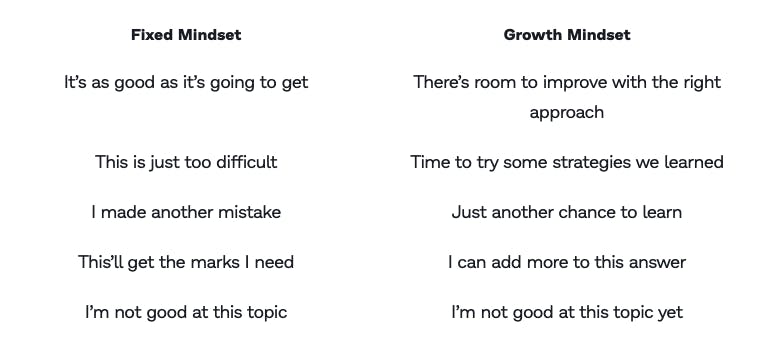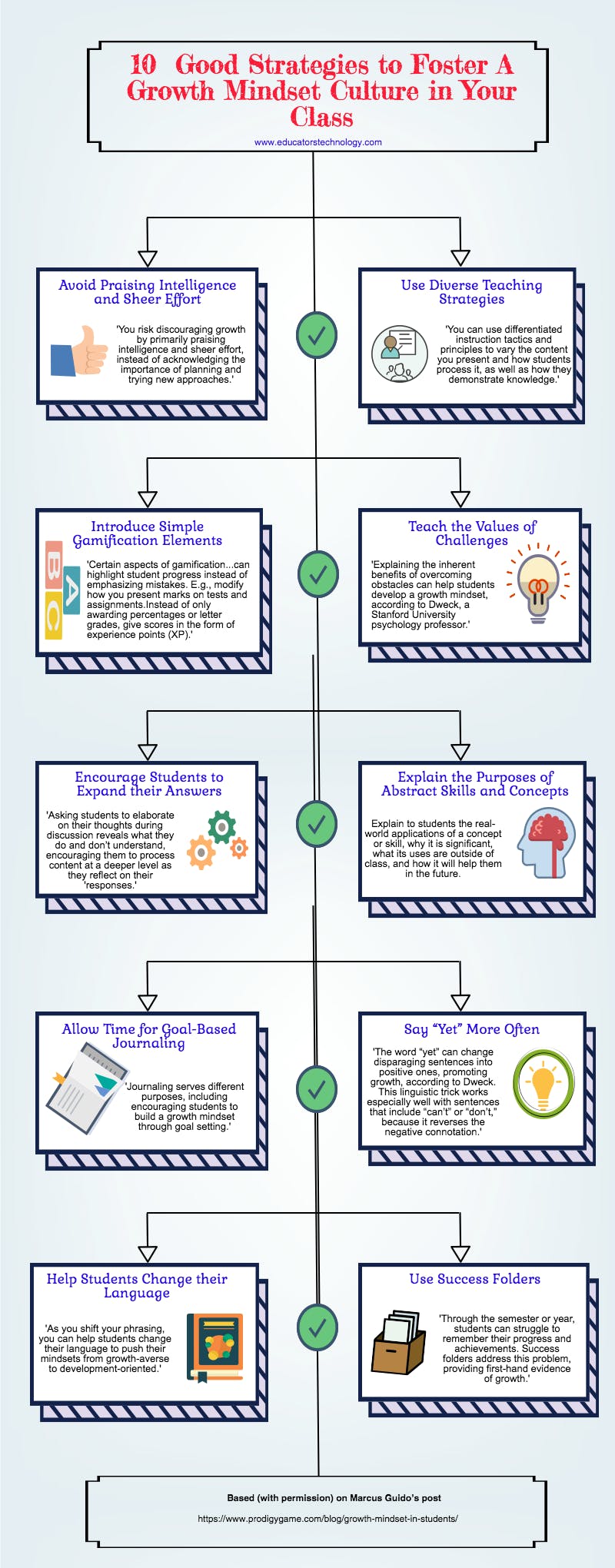Should I Continue to Develop is to Create More Stronger Sidestepping
Growth mindset is increasingly common in many education settings, but understanding it and effectively building it in students has become a teaching priority. In fact, it's a core tenet of Prodigy Education's, Motivation First! philosophy of education.
It's clear why, given that this pedagogical approach focuses on helping students understand the values of effort, persistence and trying new learning methods to cultivate their talents and abilities and has shown to be effective in multiple research studies.
Along with an explanation of the philosophy's purpose and history, below are 10 ways you can instill a growth mindset in your students.
About Dr. Carol Dweck and growth mindset in education, for students
For the many educators who aren't, Dr. Carol Dweck — a Stanford University psychology professor who researches personality and development — popularized the philosophy through her 2007 book, Mindset.
She explains students' mindsets -- the way they perceive their abilities -- fall somewhere between two opposites:
- Fixed Mindset-- Students believe their skills, talents and overall intelligence are fixed traits. They may resist learning and trying to improve, typically feeling embarrassed when not understanding something.
- Growth Mindset-- Students know they can develop their skills and talents through effort and persistence, as well as being receptive to lessons and feedback. They generally believe they can improve through hard work and trying new learning methods.
If you can shift students towards the latter, Dr. Dweck writes, you can improve the level and frequency of their achievements. This is because mindset plays a prominent role in self-motivation.
The question now becomes: "How can I build or instill a growth mindset in my students?"
10 Ways teachers can foster a growth mindset in students
1. Avoid praising intelligence and sheer effort

You risk discouraging growth by primarily praising intelligence and sheer effort, instead of acknowledging the importance of planning and trying new approaches.
Complimenting intelligence can reinforce it as a fixed trait, says Dr. Dweck.
And although effort is aligned with growth mindset, explicitly praising it can backfire. For example, if you tell students to "just keep trying" when their hard work doesn't pay off, they may feel incompetent.
Instead, give feedback that highlights the values of planning and trying different learning strategies:

Because praise and feedback can change the ways students view learning processes, your approach can push them toward or further away from establishing a growth mindset.
2. Use diverse teaching strategies

Exposing students to different instructional methods and strategies will help build a repertoire of learning skills to handle diverse challenges, according to Dr. Dweck.
You can use differentiated instruction tactics and principles to vary the content you present and how students process it, as well as how they demonstrate knowledge:
- Content -- When applicable, use videos, audio clips, presentations and physical manipulatives such as blocks in your lessons. Learning stations can help you deliver this content in a single class.
- Processes-- Give students chances to not only work individually, but in pairs, small groups and big groups.
- Products-- Let students demonstrate understanding of content in a variety of ways on tests, projects and assignments. For example, you can create an open project that students can complete as an essay, presentation or artistic production.
By expanding your teaching tactics, students should sharpen a range of skills to help them approach different learning obstacles.
Many math teachers, for example, use a variety of math games to diversify their usual pedagogical toolkit. Keep in mind it can be challenging to use diverse teaching strategies in a traditional classroom seating arrangement. Consider a flexible seating classroom plan to sidestep some of the environmental constraints you might have in your learning space.
3. Introduce simple gamification elements

Certain aspects of gamification — the practice of applying video game elements to your class — can highlight student progress instead of emphasizing mistakes.
This can be accomplished by leveraging digital game-based learning tools, such as Prodigy Math or Prodigy English. In a 2021 survey of 5th - 8th grade students by Prodigy Education, Prodigy Math users who were classified as having a growth mindset had stronger performance in math and were more engaged in the math content than users who were classified as having a growth mindset.
Alternatively, you can easily modify how you present marks on tests and assignments.
For example, if a student earns 85% on a quiz, give him or her 8,500 XP too. You can also award XP for completing assignments, participating in class or anything that demonstrates effort to learn. Students many even actively take on extra-curricular work, similar to how they complete quests and missions in video games.
You can give XP for separate skills and topics, keeping track of the points students have accumulated like so:

Doing this gives them a clear reference point to see how much they'd learned and accomplished.
And instead of going downhill from 100%, they're going uphill from zero XP.
This illustrates the type of steady improvement that's at the heart of building a growth mindset.
4. Teach the values of challenges

Explaining the inherent benefits of overcoming obstacles can help students develop a growth mindset, according to Dr. Dweck.
She specifically recommends teaching about the effect on the brain when people push through their comfort zones to grasp difficult concepts. The neurons form stronger connections, leading to improved intelligence over time. Therefore, effort and difficulty are paths, not roadblocks, to becoming smarter.
Middle school students in a control group that learned this lesson earned a clear increase in math scores over two years, according to a study by Dr. Dweck and her colleagues.
But those in a group that thought intelligence was fixed saw a decrease.
As these results show, simply teaching the broad benefits of building a growth mindset can have a positive effect on students.
5. Encourage students to expand their answers

Asking students to elaborate on their thoughts during discussion reveals what they do and don't understand, encouraging them to process content at a deeper level as they reflect on their responses.
This demonstrates a core aspect of growth mindset-- subject matter expertise isn't inherent, but developed.
Give students opportunities to share and expand on their thoughts by running:
- Problem-based learning (PBL) activities-- Whether in a small or large group, problem-based learning allows students to collaborate and share thoughts with each other.
- Question and answer sessions after presentations -- Encourage students to ask questions to the presenter, allowing him or her to delve into important points.
As you encourage students to elaborate on their thoughts and responses, they should improve understanding of subject matter and clearly see the values of effort and critical thinking.
6. Explain the purposes of abstract skills and concepts

Teaching a unit or subject filled with abstract skills and concepts? Instilling a growth mindset in students may take more work.
This is because if the bulk of your students struggle with determining a concept's real-world applications, they may not see the purpose in improving their knowledge of that concept.
Should you feel this is the case with a given skill or topic, explore and explain:
- Why it is significant
- What its uses are outside of class
- How it will help students in the future
By doing so, most students should grow interested in the once-abstract concept and want to understand it at a deeper level.
Instilling a growth mindset in students should be easier as a result.
Experiential learning activities and active learning strategies help bridge this gap with an approach that puts students at the center of the learning process, allowing them to build a more meaningful understanding of the abstract skills and concepts you are teaching.
7. Allow time for goal-based journaling

Journaling serves different purposes, including encouraging students to build a growth mindset through goal setting. As an exit ticket, ask students to:
- Set learning goals for themselves
- Discuss progression toward meeting these goals
For example, a student may set a goal to earn a certain grade on an upcoming quiz. To accomplish this goal, the student must write the steps he or she is taking. These could include completing a specific number of extra homework questions each night.
No matter the goal, students should follow the SMART method, ensuring it isn't too lofty.
The goal should be:
- Specific
- Measurable
- Attainable and Agreed-Upon
- Realistic
- Time-Based
This kind of goal setting is, in a sense, the embodiment of building a growth mindset. Students are working to improve, dissuading themselves from thinking their traits and skills are fixed.
What will happen when they meet their goals? They'll know growth is always possible.
8. Say "yet" more often

The word "yet" can change disparaging sentences into positive ones, promoting growth, according to Dr. Dweck.
This linguistic trick works especially well with sentences that include "can't" or "don't," because it reverses the negative connotation.
See for yourself by adding "yet" to the end of these sentences:
- I can't do long division
- I don't have the skills to answer this question
- I don't understand dependent and independent clauses
When you catch yourself using similar sentences, keep this trick in mind and share it with students.
You'll demonstrate that mastering skills and understanding concepts is always possible -- it's just dependent on time, persistence and trying different learning techniques.
9. Help students change their language

As you shift your phrasing, you can help students change their language to push their mindsets from growth-averse to development-oriented.
Fixed-mindset students see poor performance as a rebuke of their abilities, writes Dr. Dweck. Instead, you can help them view struggle as a chance to improve skills and understanding.
Language — written, spoken and thought — is a tool to accomplish this goal and it has been shown to be effective!
In 2019, a large-scale research study on growth mindset with 25 researchers led by Dr. David S. Yeager (and including Dr. Dweck!) found that a growth mindset intervention led to higher grades for students who were low-achieving and also led more students to enroll in more rigorous math courses.
Consider creating a table, similar to the one below, to post in your classroom:

This will give students a clear reference point to build a vocabulary that reflects growth mindset.
10. Use success folders

Through the semester or year, students can struggle to remember their progress and achievements. Success folders address this problem, providing first-hand evidence of growth.
What are success folders? That becomes clear when learning how they cultivate growth mindset. You must:
- Create the Folders -- Give each student a folder -- yes, the kind made of cardboard or stiff paper. On the cover, ask them to draw a picture or write a short story that depicts their personal concepts of success.
- Personalize the Folders-- Every day or week, allot time for students to add personal examples of successful learning to the folder. These can be summaries of tasks they completed, explanations of new concepts they learned or tests and assignments they aced.
- Reflect on the Folders -- To begin each week on a high note, have students look through their success folders. This encourages them to reflect on their achievements, providing first-hand evidence of growth.
Try it yourself to see the power a simple folder can have for growth mindset in education settings.
Growth mindset infographic
Created byEducational Technology and Mobile Learning— an online resource for teaching tools and ideas — below is an infographic based on this article, helping you foster a growth mindset culture in your class:

Final thoughts about growth mindset in education
Research on a growth mindset continues to evolve. In 2016, Dr. Dweck wrote an article for Harvard Business Review where she outlined some common misconceptions about growth mindset research.
Now that you have a solid understanding of growth mindset research, you can use these 10 tactics to foster a growth mindset in your students, helping them cultivate their talents and abilities in and out of the classroom.
You should see a positive attitude shift as they actively build new skills, learn about unfamiliar topics and take on different challenges.
Dedicated students. Happy teacher. What's not to love?
Create or log into your free teacher account on Prodigy — an adaptive math game that adjusts content to accommodate player trouble spots and learning speeds. The curriculum-aligned platform is used by millions of students and teachers around the world.
* Responding to questions was/is optional for students. All data is anonymized and aggregated. Findings are correlational not causal. No personally identifiable information (PII) was collected from students during this process. Findings are based on responses to questions at the time. Individual circumstances may vary, results are not guaranteed.
whitewastumpaboos1938.blogspot.com
Source: https://www.prodigygame.com/main-en/blog/growth-mindset-in-students/
0 Response to "Should I Continue to Develop is to Create More Stronger Sidestepping"
Post a Comment